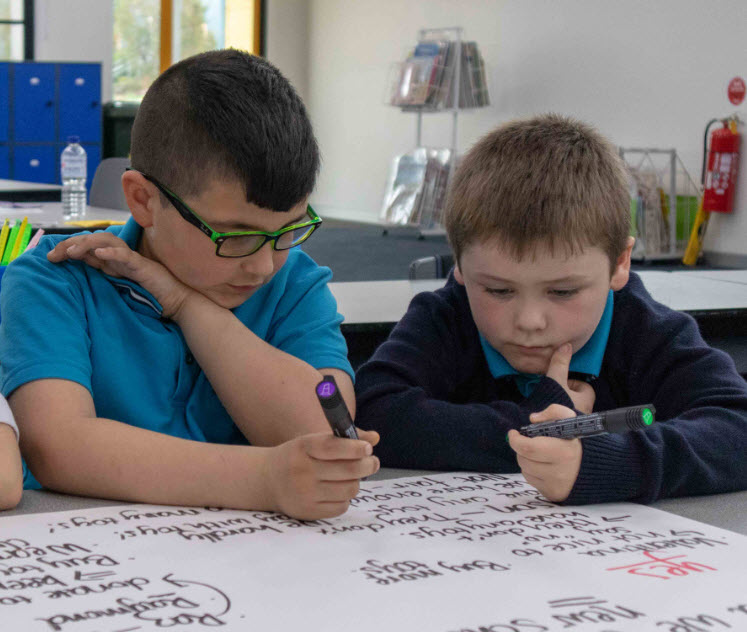
Learning differences, learning difficulties, learning disabilities and the NCCD
According to the Dyslexia–Speld Foundation, the terms learning differences, learning difficulties and learning disabilities are often used interchangeably, and definitions of these terms can vary between institutions and agencies, nationally and internationally. There are, however, important differences between these terms, and a clear understanding of these differences is vital when reporting students to the NCCD.
What are learning differences?
The term 'learning differences' refers to the diverse ways all students learn and the rates at which they learn. Learning differences take into account individual learning motivators; learner aspirations, interests, experience and cultural background; and individual students’ strengths and needs.
Example
If a student is highly interested in a particular topic or curriculum subject area this can act as a specific learning motivator for the student, resulting in higher levels of achievement in a particular learning area for the student.
What are learning difficulties?
The term learning difficulties refers to factors outside of learning differences or disabilities that might affect a student’s ability to achieve at the same rate as their peers. Factors such as absenteeism, ineffective instruction, inadequate exposure to necessary curricula, English as an additional language, socio-economic status and personal or family trauma may all impact upon a student’s ability to effectively engage with learning activities and meet academic expectations. This may lead to difficulties for the student in meeting the expected learning targets for their age and/or years of schooling.
Example
If a student is often absent from school, they will acquire gaps in their learning and will need specific interventions aimed at addressing those gaps. If the interventions provided are sufficient in addressing the student’s learning needs, and the absenteeism is eliminated, the student can make the improvements necessary to meet the expected learning targets.
What are learning disabilities?
Learning disabilities are defined by the Disability Discrimination Act 1992 (DDA) and the Disability Standards for Education 2005 as 'a disorder or malfunction that results in a person learning differently from a person without a disorder or malfunction'. Students with learning disabilities are a specific group who are considered to have learning difficulties but do not respond to appropriate intervention. The Diagnostic and Statistical Manual of Mental Disorders: DSM-5 (American Psychiatric Association, 2013) classifies learning disabilities as ‘Specific learning disorders’ among a number of other neurodevelopmental disorders. According to the Dyslexia–Speld Foundation, a specific learning disorder will not be diagnosed if other mental, sensory or neurological disorders exist.
Students with learning disabilities are of average or above average intelligence and there is often a gap between a student’s potential and their achievement at school. Learning disabilities are intrinsic, life-long and neurologically based. According to the Dyslexia–Speld Foundation, it is estimated that 3–5 per cent of the student population have a learning disability, and the majority of these students will not have a formal diagnosis. The term 'learning disabilities' describes a number of conditions that may be experienced by learners, such as dyslexia, dysgraphia, dyscalculia, dyspraxia, auditory processing disorder and developmental language disorder.
Example
If a student has a learning disability such as dyslexia, they will not respond in the expected way to a whole-class, evidence based, structured, synthetic phonics teaching approach to reading. For successful academic performance, they will require the provision of adjustments such as text-to-speech and speech-to-text assistive technologies, predictive text applications for writing and visual supports, and/or intensive one-to-one teaching intervention using a structured synthetic phonics approach. The provision of note-takers and/or assistive technologies might be provided for assessments tasks.
How do I report students with learning differences, difficulties and disabilities to the NCCD?
- Students with learning differences and learning difficulties, as defined above, are not included in the NCCD.
- Students with a learning disability, as defined above, who require the provision of adjustment(s) to address their disability under the DDA for 10 weeks or more, (consecutive or cumulative over the 12-month period preceding Census Day) are included in the NCCD.
Reference
Dyslexia – SPELD Foundation Literacy Services. (2014). Understanding learning difficulties: A practical guide. South Perth: Dyslexia – SPELD Foundation Literacy Services
- mail Email
-
BookmarkThis bookmark has been added to your bookmarks.Did you know you can organise your bookmarks into separate lists when you are signed in? Sign in or register